Aside from events, Red Bull’s packaging also plays a part in its global appeal.
“Red Bull really looks like a product from a global economy. It doesn’t look like a traditional American soft drink – it’s not in a 12-ounce can, it’s not sold in a bottle, and it doesn’t have script lettering like Pepsi or Coke. It looks European. That matters," explains Harvard Business School professor Nancy F. Koehn in a 2001 article. Though it's since diversified its product selection since that article was published, the fact remains that Red Bull's consistent packaging has helped this brand go global.
2) Airbnb
Airbnb, a community marketplace for people to list and book accommodations around the world, was founded in 2008 out of San Francisco, California.
Since then, Airbnb has grown to 1,500,000+ listings in 34,000+ cities worldwide. A large contributor to the company’s explosive global success? Social media.
In January 2015, Airbnb launched a social media campaign around the hashtag #OneLessStranger. The company referred to the campaign as a "global, social experiment,” in which Airbnb asked the community to perform random acts of hospitality for strangers, and then take a video or photo with the person and share it using the hashtag.
Just three weeks after the launch of the campaign, over 3,000,000 people worldwide engaged, created content, or were talking about the campaign.
3) Dunkin Donuts
4) Domino's
Similar to Dunkin Donuts, Domino’s has prioritized menu innovation as a means of increasing international interest and awareness.
“The joy of pizza is that bread, sauce, and cheese works fundamentally everywhere, except maybe China, where dairy wasn’t a big part of their diet until lately,” explains Domino’s CEO J. Patrick Doyle.
“And it’s easy to just change toppings market to market. In Asia, it’s seafood and fish. It’s curry in India. But half the toppings are standard offerings around the world.”
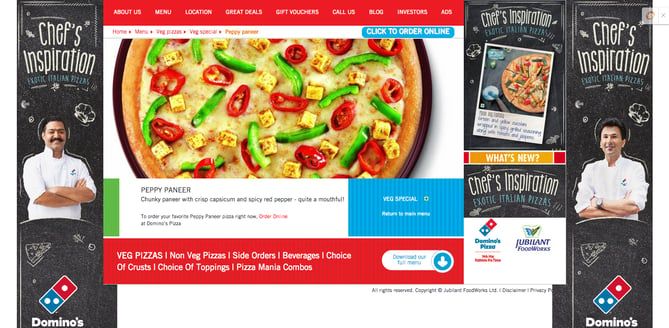
By making a conscious effort to gain a better understanding of the preferences of the markets it’s trying to break into, Domino’s is able to deliver pies diverse enough to gain international attention.
5) Rezdy
Some companies may not be trying to attract global markets directly, but if their clients are, they better know how. Rezdy is an Australian-based reservation software designed to make online booking smoother for tourists and agents alike.
Though Rezdy’s clients are Australian-based, the company needs to cater to its clients’ international visitors. Click on the screen shot to check out this fun video on Rezdy’s homepage:
The first feature the video spotlights is ‘Internationalisation.’ The video walks us through how easy the service is for users, but is sure to emphasize the language and currency customization tool upfront. Even if your company is marketing to other regional companies, consider their global customers as if they were your own.
6) World Wildlife Foundation
WWF took its Earth Hour initiative – a voluntary worldwide event where participants turn off their lights for an hour to show how easy it can be to battle climate change – and brought it to Norway’s mobile audience.
Scandinavian countries like Norway experience extreme daylight hours in different seasons, making the country a prime candidate for WWF’s Blackout campaign. Using digital agency Mobiento, the nonprofit placed the Blackout Banner across Norway’s top media sites to promote Earth Hour. With one tap of the banner, the screen went black. Finger swiping the black screen slowly revealed the Earth Hour countdown. The banner attracted roughly 1,000,000 impressions and the campaign received three MMA Global Mobile Marketing Awards back in 2012.
Have a cool idea? Don’t be afraid to try it out on one international market – just make sure it’s the appropriate audience. (Also, don’t be afraid of the dark.)
7) Pearse Trust
With offices in Dublin, London, Vancouver, Atlanta, and Wellington, Pearse Trust has grown to be an international authority on corporate and trust structures. But it takes more than offices all over the map to reach an international audience.
That’s why Pearse Trust keeps content flowing on its Facebook page that engages its various markets. In this screenshot below, you can see Pearse Trust posts lots of content featuring international affairs relating to the company’s practice.
It also levels out external articles with Pearse Trust content, featuring news from places like Germany, Ireland (where it has a Dublin office), and the U.K. (where it has a London office). This is a great example of focusing on common interests shared among your company’s various markets while also making the content relatable to customers by region.
8) Nike
Nike has been able to evolve its global presence through the careful selection of international sponsorships such as its previous long-standing relationship with Manchester United.
Although sponsorship spending can be fairly unpredictable – demand costs tend to surge due to triggers like championships and tournaments – these partnerships have certainly helped the brand capture the attention of a global audience.
Nike’s NikeID co-creation platform serves as another strategy that the company is using to appeal to international markets.

By putting the power of design into the hands of the consumer, Nike is able to deliver customized products that align with different cultural preferences and styles.
9) McDonald’s
We all know McDonald’s is a successful global brand, so unlike its menu, I’ll keep it light.
While keeping its overarching branding consistent, McDonald's practices 'glocal’ marketing efforts. No, that’s not a typo. McDonald’s brings a local flavor, literally, to different countries with region-specific menu items. In 2003, McDonald’s introduced the McArabia, a flatbread sandwich, to its restaurants in the Middle East.
McDonald’s has also introduced macaroons to its French menu:
And added McSpaghetti to its menu in the Philippines:
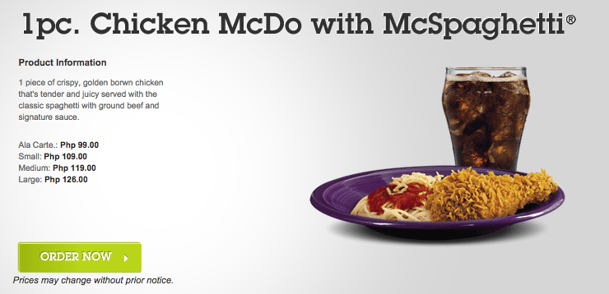
10) Innocent Drinks
Innocent Drinks is the leading smoothie company in the U.K., but that’s not the only place you’ll find its products. In fact, Innocent products are now available in 13 countries across Europe.
And despite its widespread reach, the company’s “chatty branding” remains consistent across the board. For instance, the website is very bubbly, with contact information that reads “call the banana phone” or “visit the fruit towers.”
While global expansion and rapid growth can sometimes distract a company from consistent branding, Innocent Drinks has managed to remain true to itself. By ensuring that the brand’s voice is interpreted the same way around the world, Innocent is able to create a more recognizable brand.
11) Unger and Kowitt
The phrase 'glocal’ can be defined as “Think Globally, Act Locally." But what happens when you switch the two around?
Woah, fasten your seat belts – literally. Unger and Kowitt is a traffic ticket law firm based in Fort Lauderdale defending drivers in the state of Florida. Not very global, right? Well, Unger and Kowitt understands that America is a melting pot and that Florida is bursting at the seams with different cultures and languages.
Though a domestic service, the firm’s website is available in English, Spanish, Portuguese, and Creole. With these options, Unger and Kowitt can cater to Florida’s nearly 3.5 million Floridians who speak Spanish, Portuguese, or Creole. Don’t miss out on expanding your client base – sometimes you don’t have to look far to attract international business.
12) Coca-Cola
Coca-Cola is a great example of a brand using international marketing efforts. Though a large corporation, Coca-Cola focuses on small community programs and invests a lot of time and money in small-scale charity efforts.
For example, in Egypt, Coca-Cola has built 650 clean water installations in the rural village of Beni Suef and sponsors Ramadan meals for children across the Middle East. In India, the brand sponsors the Support My School initiative to improve facilities at local schools. Not to mention, the brand sticks with selling an emotion that can’t get lost in translation: happiness. Now, tell me this doesn’t look like fun:
13) H&M
According to Interbrand, H&M is on track to increase new store openings by 10-15% a year. One of the secrets fueling its global expansion strategy?
Optimizing its online experience.
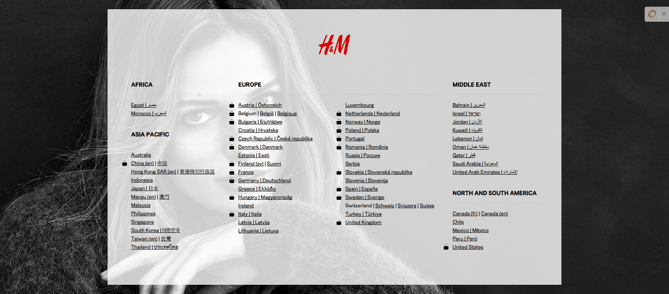
With an online shop available in 21 markets, including the U.S., H&M is doing everything in its power to create an easy-to-navigate, mobile-friendly online shopping experience.
What other brands out there do a great job with their international marketing? Let us know in the comment section below.
Editor’s Note: This post was originally published in November 2012 and has been updated for freshness, accuracy, and comprehensiveness.
from HubSpot Marketing Blog http://bit.ly/1fGLoRX
from Tumblr http://bit.ly/1Sg2UhN

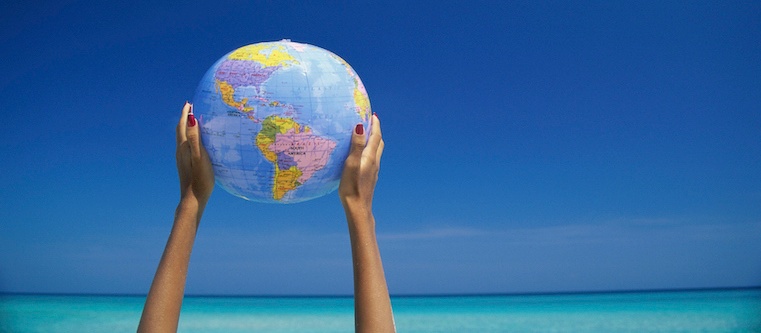

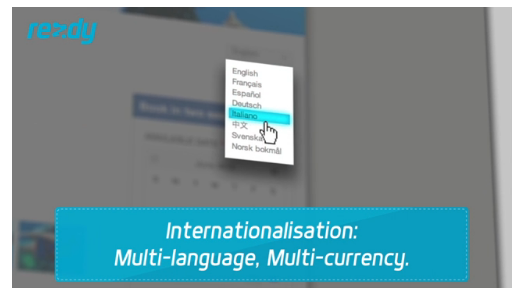


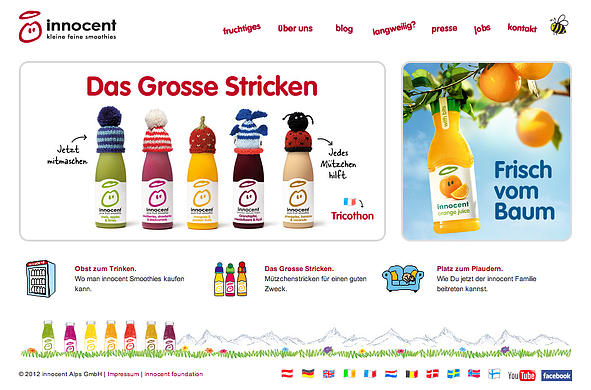

No comments:
Post a Comment